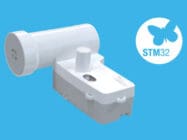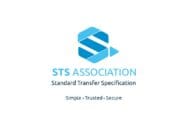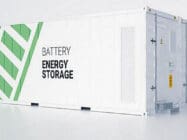
IEC 61850 has emerged as the indispensable foundation for the automation and management of decentralized renewables-based electric grids.
Twenty years after the first publication of the IEC 61850 standard in 2003, the utility transmission and distribution businesses and operating environments have changed beyond recognition.
Then the first tentative steps into the digital world were taken with the digitalization of substations.
Though the concept of smartening and automating the grids was starting to emerge with the rolling out of smart meters, successive technological advancements have opened more new and innovative applications.
Alongside this, the transition to net zero is leading to the accelerated integration of utility-scale and residential distributed energy sources to the grids, while wide-scale electrification across sectors such as transportation, heavy industry and home appliances is introducing changes and uncertainties unprecedented for the system operators.
At the same time, the legacy communications technologies that have formed the foundations of power grids today, such as time division multiplexing interfaces, and analogue E&M interfaces used in devices such as relays and remote terminal units, have passed beyond the end of their technology lifecycle, necessitating replacement with next generation devices.
With these developments, IEC 61850 has been expanded to offer a one-stop utility automation framework to meet the complex challenges of operating a dynamic, distributed, intelligent, multivendor grid, both now and in the future.
What are some IEC 61850 use cases?
The first publication of IEC 61850 aimed to enable open and interoperable digital information exchanges for substation automation applications.
Today, with the expansion of the scope of IEC 61850, utilities can use it for automation between substations, for automation between substations, control centres and data centres and for a range of grid-related applications including condition monitoring diagnosis, the transmission of synchrophasor information, power quality and distribution automation.
These are significant developments for power utilities. For example, distribution automation in the feeder domain of distribution grids with the automation of monitoring, protection, and restoration to improve reliability, safety and efficiency at the distribution level.
Similarly, synchrophasor data opens the way to optimizing line capacities and efficiencies and facilitating integration with distributed energy resources.
As an example of such a use case, Dominique Verhulst, Global Energy Practice Leader at Nokia, cites a fire mitigation initiative by a US utility that draws synchrophasor data from several points on the distribution network, which is aggregated and analyzed to recognize breaking conductors and from where a goose message can be sent to the appropriate line switches to de-energize the line “before it hits the ground”, mitigating the risk of fires.
Such new use cases rely on the latest high bandwidth, low latency networks, which also offer the opportunity to implement a true multi-vendor environment.
“With the standardizations in these protocols it opens up the opportunity for utilities to step closer to multivendor interoperability for protection and control systems,” he says.
What are the steps to implementing IEC 61850?
Turning to the practicalities and technicalities of an IEC 61850 implementation, Hansen Chan, Product Marketing Manager for Digital Industries at Nokia, advises that the starting point for a utility is to evaluate the status of its communications infrastructure.
Some issues to consider include the right connectivity to support applications – such as distribution automation – that are both bandwidth intensive and latency sensitive, whether in the substation domain or in the wide area network and down to the last mile to smart meters in the feeder domains.
“With software playing a more and more dominant role in grid operation, communication reliability is key as without connectivity there is no visibility. Then the grid control system just would not function.”
Chan mentions that another key consideration is the “human layer” at the organizational level.
“Implementing IEC 61850 is a multi-disciplinary effort, so you need everyone to be on the same page and to work together towards a single vision. There are different teams that need to be involved not just on the communications side but for example in IT, as new software such as ADMS being delivered in a virtualized compute environment, the data centre network has become a critical part of the communication infrastructure foundation for IEC 61850.”
Verhulst adds that this multi-disciplinary requirement mirrors the trend in utilities of new talent hires who are familiar with these technologies at both hardware and software levels.
This will support the ongoing development of IEC 61850 with their ability to develop new solutions around it.
“Our expectation is that IEC 61850 will keep evolving towards more centralized protection and control and centralized remedial actions schemes that are relying on the more recent variants of the protocols such as the routed goose and sampled values that are becoming popular with utilities.”
What are the components of the IEC 61850 communication infrastructure?
IEC 61850 communications start from the station and process buses in substations and extend to the grid edge via the field area network (FAN) as well as to the network control centre and data center via the wide area network.
Thus, a reliable and functioning communication infrastructure is key.
Chan highlights the “service-centric approach” of Nokia, saying that it is an essential requirement of such a network foundation to support many different grid applications.
“There will be more and more applications coming for which one will need more and more network virtual segmentation and so one needs to have a communication network platform that allows them to be rolled out as required,” he says.
Chan also emphasizes the importance of incorporating broadband wireless access technology such as LTE into the service-centric network in order to deploy IEC 61850-based assets at the grid edge where fiber is not available.
Verhulst states that Nokia’s solutions are very comprehensive with radio access networks that allow individual private wireless infrastructures based on LTE or 5G to be built and are based on a “strong utility focus”, considering elements such as the backhaul requirements and the substation communication elements.
“Our implementation is an end-to-end IP/MPLS solution including a full series of substation and wireless fieldrouters, packet microwave and DWDM optical transport as well as the backbone networking infrastructure.”
He adds that cybersecurity concerns also have been considered and that secure encryption and key cycling are provided to safeguard grid communications.
What are the benefits of an IEC 61850 implementation?
Some of the stated benefits of an IEC 61850 implementation include the ability to roll out applications in a unified manner, interoperability with legacy devices and future-proofing for new technology integrations.
Verhulst says that utilities with which Nokia has worked on network implementations have seen improvements in SAIDI averaging between 30% to 50%.
Further, a JRC study on UK utilities found that they could save around £13 billion (€15.2 billion/$16.5 billion) in grid infrastructure investment with their implementation.
He also returns to the interoperability benefits, saying that Nokia sees IEC 61850 as clearly indicating the trend of utilities being able to “pick and choose” from among the vendors.
“It’s not going to be about whose hardware or software we should buy but more about who has the best to do what we need.
“And added value is going to come with the innovation from the vendors so it’s an interesting move that we will see more of ahead in the next five to ten years.”








